When your tent becomes sticky or the coating flakes off, the urethane coating is starting to break down.
When your tent becomes sticky or the coating flakes off, the urethane coating is starting to break down. This break down process is called delamination and generally starts to happen depending on the care and and storage of the tent's
How to Waterproof a Tent
When your tent becomes sticky or the coating flakes off, the urethane coating is starting to break down. This break down process is called delamination and generally starts to happen depending on the age, care and storage of the tent’s life. This is part of a tent’s natural breakdown process and is not covered under warranty. The good news is this can be remedied at home!
Retreating a Tent:
- Soak the tent in cool water with unscented laundry detergent to break down the coating.
- Scents can attract skunks, bears, and other animals which is why unscented detergent is preferred (you may add a ¼ cup of ammonia in addition to the detergent to speed up the process).
- For any tougher remaining spots, you can soak it in rubbing alcohol. It usually dissolves the urethane into a greenish blob that you can scrape off.
- After a thorough rinse, the fabric should be totally stripped of any coating.
- Allow rain fly to air dry completely.
- Take a bristle brush and gently scrub the fly to remove any remaining urethane flakes that may be present. Stubborn spots may require additional rubbing alcohol.
- You are now ready to apply your waterproofing product. We recommend Tent Sure™ for the underside of the fly, and Revivex® for the outside of the fly for additional protection.
- You may also use Tent Sure for the floor, and Gear Aid’s Seam Grip+WP™ for the seams.
- Set the rain fly on the ground with the underside facing up (or out). Follow the instructions on the waterproof product to apply a new coating to the fly.
- This is also a good time to retreat the seams, see our Seam Sealing FAQ for more information on how to do this.
When you’re out in the wilderness, one of the sounds of nature you don’t want to hear is water dripping inside your tent. If you’ve been there, it’s time to shore up the waterproofness of your shelter.
There are three ways to waterproof your tent:
- Seal the seams: Applying seam sealer can help keep moisture from seeping through.
- Refresh the urethane coating: The urethane coatings on the inside of your rainfly and the floor of your tent are the primary barriers against moisture.
- Refresh the DWR: A durable water repellent (DWR) coating helps your rainfly shed water.
Sealing Tent Seams
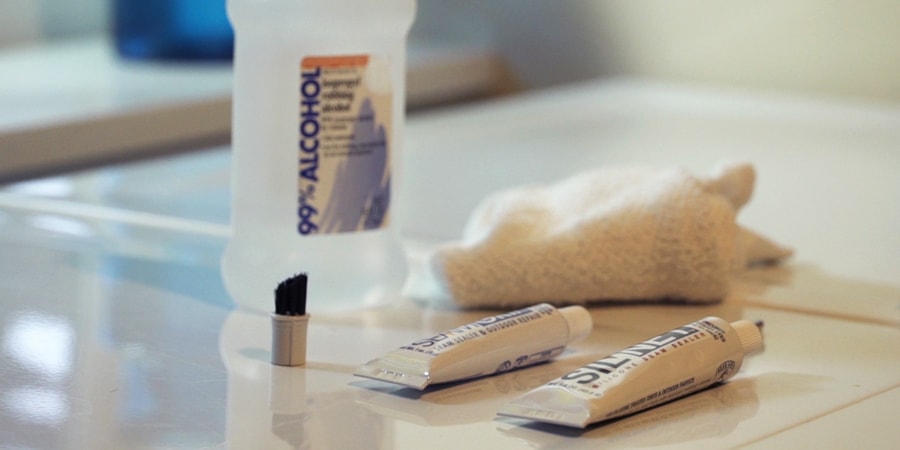
Many tents come with seams that are sealed, but the sealant can wear out over time, letting water leak through.
If you find a leaky seam, here’s what you’ll need:- A rag
- Rubbing alcohol
- Seam sealer (be sure to get the right type for your tent. Silicone-treated fabric takes a different sealer than polyurethane-coated fabrics. Most tents use polyurethane-coated fabrics, but if you’re unsure what type of fabric your tent is made of, check with the tent manufacturer.)
- Drop cloth to contain spills (optional)
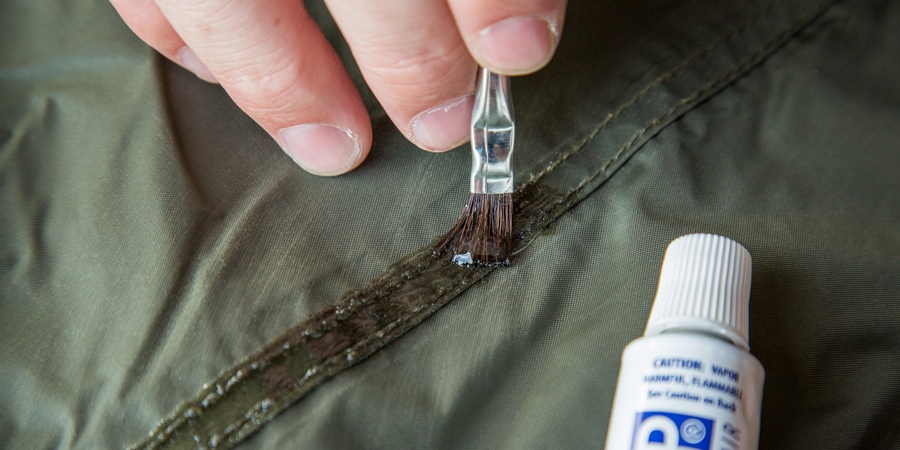
Here’s how to seal seams:
- Set your tent up in a dry, sunny spot or brightly lit room so you can easily examine all of the seams. You will seal seams on the underside of the fly and the inner side of the tent body. It’s helpful to put the fly on inside out for easier access to the seams.
- If you find seam tape that is coming loose on the underside of the fly, gently remove any peeling sections, but leave intact sections in place.
- Prep the seams by gently cleaning them with a rag and rubbing alcohol.
- Apply the new seam sealer to the seams.
- If one seam is beginning to fail, the rest might not be far behind, so you may want to apply seam sealer to all the seams.
- Allow the seam sealer to dry completely.
Refreshing the Urethane Coating on a Tent
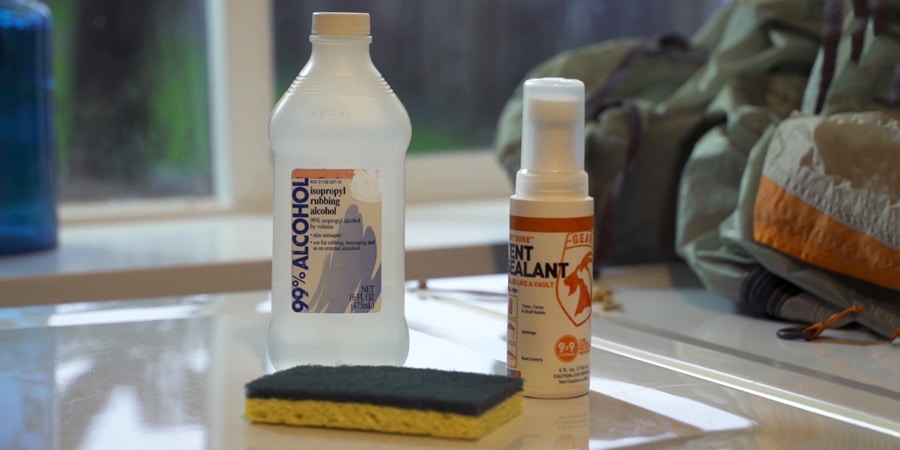
If you’ve noticed stuff flaking off of the inside of your rainfly or on the floor of your tent, then it’s time to apply a new urethane coating.
Here’s what you’ll need:
- A sponge with an abrasive side
- Rubbing alcohol
- Tent sealant (again, be sure to get the right type for your tent. Silicone-treated fabric takes a different sealer than polyurethane-coated fabrics. Most tents use polyurethane-coated fabrics, but if you’re unsure what type of fabric your tent is made of, check with the tent manufacturer.)
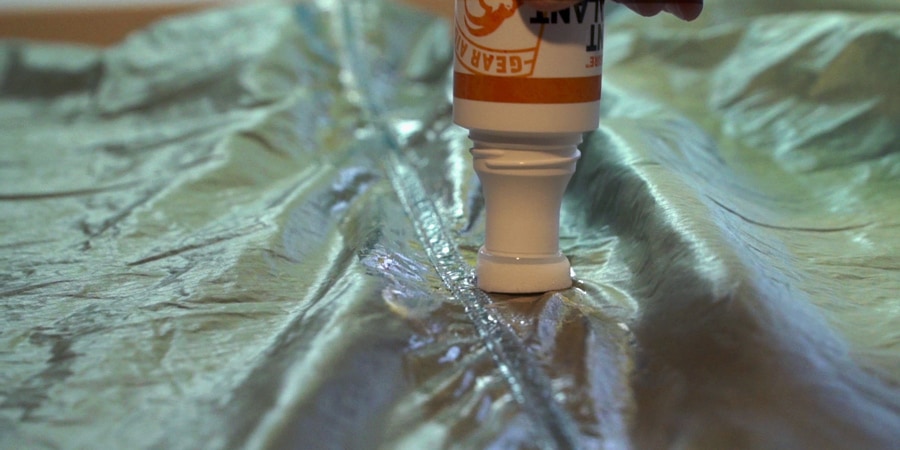
Here’s how to apply the tent sealant:
- Lay your rainfly and/or tent floor flat and gently scrub off the flaking coating with rubbing alcohol and your sponge.
- Apply a thin coating of the new tent sealant to the whole fly or tent floor, following the directions on the bottle of sealant.
- Let the new coating dry for at least 24 hours before packing your tent away.
- Wash your hands to remove any residue from sealant and coated tent fabrics.
Refreshing the DWR on a Tent
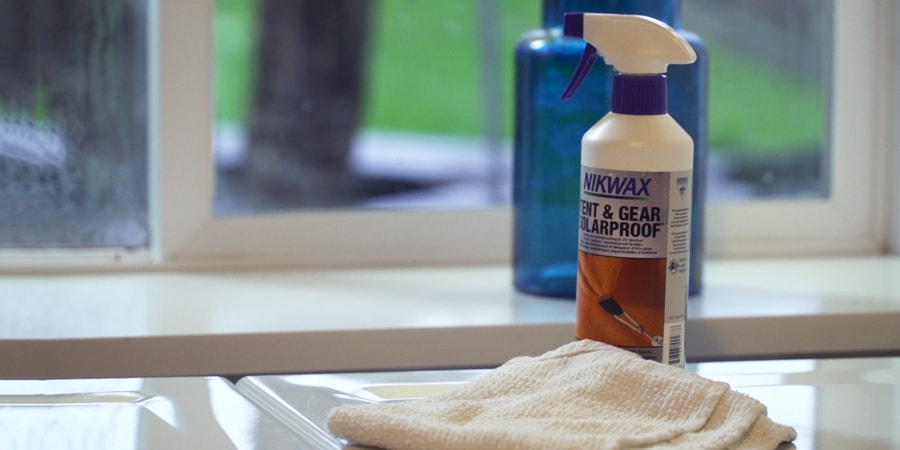
If rain isn’t beading up on your fly anymore, you can refresh the durable water repellent (DWR) coating. Here’s what you’ll need:
- A spray-on water-repellent product
- A clean, damp cloth
- Water
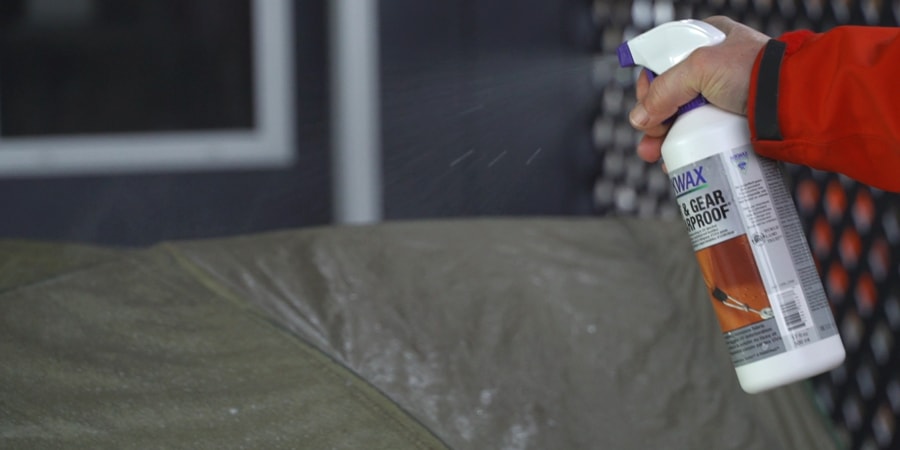
Here’s how to apply the waterproof spray:
- Set up the tent and spray down the rainfly with clean water (if you just washed your tent, you don’t have to wait for it to dry before applying a new DWR coating.)
- Apply the waterproof spray evenly over the exterior of the rainfly.
- After a couple minutes, take your damp cloth and wipe off any excess coating.
- Let the tent dry completely before packing it away.
